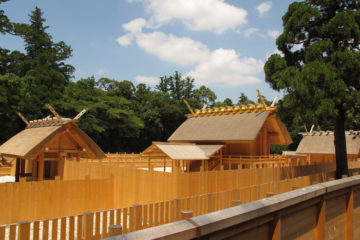A Modern New Home for Japan’s Traditional Dramatic Art
Tokyo’s Kabukiza Theater, dedicated exclusively to performances of one of Japan’s native drama, reopened April upon completion of reconstruction that took three years and cost 45 billion yen. First constructed in 1889, the new theater, the fourth to exist on this location, retained the familiar façade of its predecessor. In addition to more convenient access — through a direct underground corridor linking the building to the Higashi-Ginza subway station — the new theater boasts new retail stores, restaurants and the 29-story commercial skyscraper. The fifth floor offers a spectacular view of costumes and stage props used in the kabuki drama, and visitors can also enjoy greenery in the roof garden. Shochiku Company, the operator of the building, said it was expecting 1.1 million visitors its first year — an increase of about 20% from previous years.
Kabuki is a native Japanese drama combining music, dance and acting performances. It originated some 400 years ago during the Edo period (1601-1868) and continues today as form of popular entertainment. More recently, viewers are able to rent hand-held monitors displaying dialog or background description of the play (for an extra charge). This is currently available only in Japanese, but from around this summer devices displaying English are also planned. Audible explanations via earphone receivers are already available.
Ex-Japan’s Prime Minister Shinzo Abe had remarked, “This is the real ‘Cool Japan.’ I hope people from all over the world come to see it.”



0件のコメント